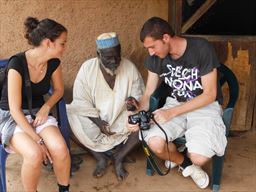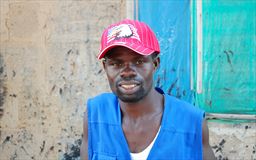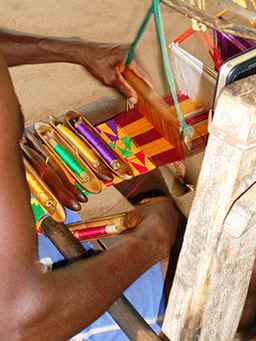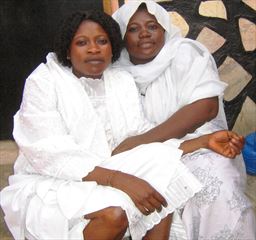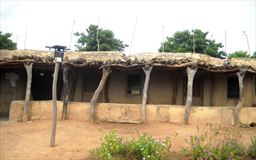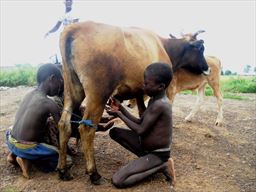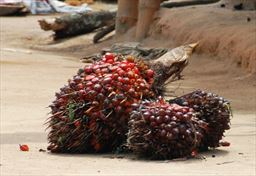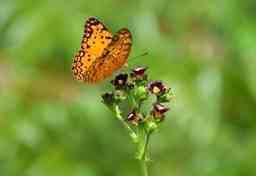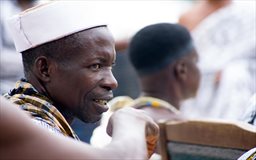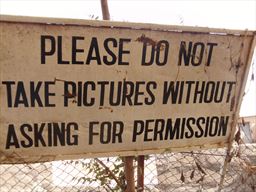Photography & Videography Ghana
Like everywhere, photography in Ghana is about catching a good subject at the correct time, from the correct vantage and in the correct light. When photographing in Ghana, the main problems you will have are the sun, which is rather harsh at mid-day, and the dust.
Here are some important travel photography tips that are useful for Ghana.
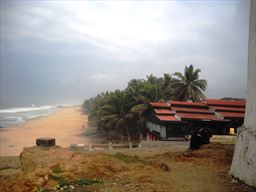 |
LIGHTING
The way the sun is positioned in the sky has a huge effect on your photos. Preferably, you want the sun to be at your back so that it illuminates the subject of your photo. When you don't have the luxury of waiting until the sun is in the perfect position, get creative. You can try to block the sun with one hand while taking the photo with the other or use something in the natural environment to shade you. This could be a house, a tree, a rock. Just anything to keep the sun's glare off your lens.
Using a hood will reduce flare and increase image contrast during the harshest part of the daylight sun. |
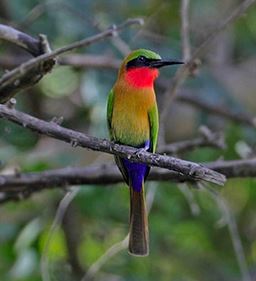 |
APERTURE for AFRICA
In the bright sunlight of Ghana, the factory-settings of your digital camera are less than optimal. Therefore, if you choose to shoot manually, you'll have more control over the image and its quality.
The apeture will help you focus on a specific object, while other objects not at that same distance will be less focused.
If your equipment allows you, try these settings in bright sunlight:
- ISO to 100
- white balance to auto
- aperture to f8
- speed to 1/250th
Aperture settings of f8 and f11 are usually optimum apertures for lenses to give the best sharpness with least aberrations. |
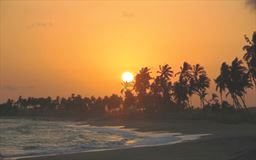
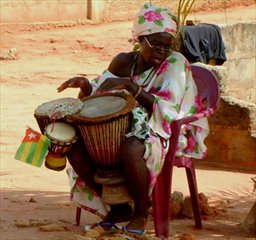
This picture needed a flash
|
MORE ABOUT LIGHTING
The best light is in the early morning and late afternoon. Scenes with high contrast get a high reaction. Sunsets are great because there is a strong contrast between a lit up sky and the darker foreground. Also dark objects against a cloudy sky or a landscape with the sun to your back tend to get positive reactions
In the middle of the day, though, a flash is indispensable. The flash fills in shadows and reduces the effect of harsh sunlight. Use flash compensation around -2 or -1 1/3 to make the flash less strong than the main lighting.
To make your flash more effective with telephotos, get a better beamer which is a simple Fresnel lens that focuses the flash light and makes it reach farther. It's very cheap, it makes you look very professional, and it greatly improves your pictures. Flash fill in requires practice to decide when to use it and how much to compensate for, so make sure that you try at home before going on a once-in-a-life trip. |
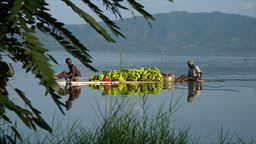
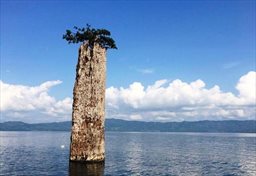
|
POLARIZING LENS
A polarizing lens is very useful in Ghana. A polarizing lens blocks the sun's glare just like polarizing sunglasses. By blocking the sun's glare, you get crisper and less washed out photos.
This type of lens will allow you to see through water instead of getting an annoying glare off the surface. It is perfect for shots at the beach, lake, or river. It is also great for getting clouds to show nicely in your photos. Many times, clouds will blend in with the sky, but with a polarizing lens, you get a distinct contrast.
Polarizer's greatly reduce the Ghana glare, increasing the color saturation, particularly of vegetation. and eliminating the washing out effects of the sun. For about $50, it is a worthy investment. |
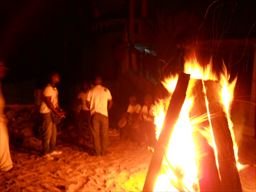 |
TRIPOD
Bringing a tripod is probably the last thing you want to do when traveling. But if you are serious about photography, especially at night, then you really should have a tripod. A camera must gather light to take a picture. So at night the shutter needs to stay open longer. And if your camera is not on a tripod, it tends to move even the tiniest amount which causes blurring.
During the day, a tripod is the best way to capture time lapsed shots and to get the best degree of clarity.
Let us know, and we can bring along one of our tripods in the vehicle for you. |
 |
BE CREATIVE and BE RELAXED
The best photos can occur when you are having fun and relaxed. Do not worrying about how your photos are going to turn out - it's probably not doing you or your photography any good. Let things happen naturally. Try the same shot from different angles. Think in new ways to make your photos more interesting to the audience. The good time that you are enjoying translates into better photos. |
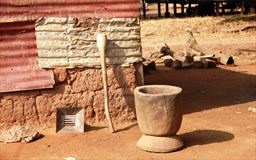 |
DUST
Your main enemy in Ghana is dust, which goes everywhere in your equipment. Make sure you bring Ziploc bags to protect your equipment. Since this makes it harder to access your equipment, you may decided to buy a nice African cloth that is much quicker to put and remove.
The dust will also affect the sky and lighting. Sometimes conditions will be hazy. During the Harmattan season (Dec-Feb), the air may be very dusty, making for less visibility, less light and a less than exciting sky. |
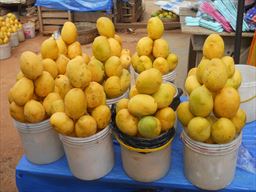 |
POWER & STORAGE
Electricity can be an issue. It can be convenient to recharge batteries in the car, using a power inverter for chargers that do not have a car adapter.
Bring your own batteries. Nothing is worse than having a dead battery or a full memory card when you are at a unique and thoroughly remote location. If you are able to find batteries at a village shop, they will most likely last for only a dozen photos at best. |
 |
WILDLIFE PHOTOGRAPHY
At Mole National Park, unlike other safari parks in southern or eastern Africa, your safari is on foot because there are no predators. This can yield intimate pictures, since eye-level pictures always bring you into the world of the animal. Also, for elephant pictures, this maintains a sense of scale since your viewpoint is not artificially high in a vehicle. |
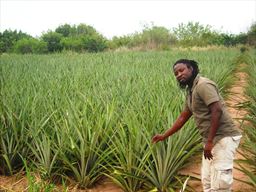
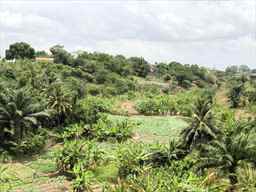
|
LANDSCAPE PHOTOGRAPHY
The secret to creating a good landscape picture is to find the ideal viewpoint, in the ideal lighting and weather conditions. Your favorite landscape may make for a perfect photo under cloudy skies, but look washed out in bright sunshine.
Placement of the horizon is also important. Generally, it is not advised that the horizon divides your picture in two equal halves. These are not your best landscapes. Shift the horizon up or down to produce a more interesting result, while placing the emphasis on the sky or the land respectively.
If you have a sky with few or no clouds, then shift the horizon up, and to put more emphasis on the land. But if an interesting sky is present, do not hesitate to shift your horizon right down to the bottom of the picture.
Depth of field is another challenge. Use a small apertures (see above) to get decent depth of field. |
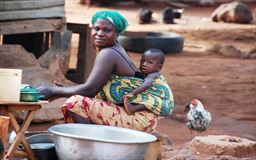 |
PEOPLE
Almost everywhere in Ghana you have to be very careful with taking pictures of the local people. It is not appreciated at all when you take a spontaneous picture of somebody. Taking pictures of children is normally not a problem at all. They normally love to be in front of the camera, especially when you can show them the picture with a digital camera.
If you want to photograph an adult though, you should at least ask it before you do so, and even then you should be prepared on receiving "No" as an answer or being asked for money for a picture. Permission should always be sought before photographing military installations, government buildings or airports. |
Still not convinced?
10 reasons to Travel with Easy Track
Back to Top
















